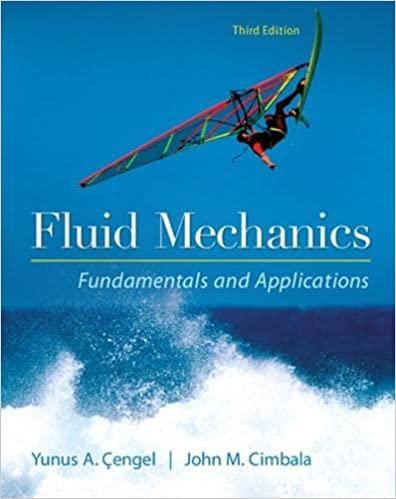Consider the same two concentric cylinders of Prob. 445. This time, however, the inner cylinder is rotating,
Question:
Consider the same two concentric cylinders of Prob. 4–45. This time, however, the inner cylinder is rotating, but the outer cylinder is stationary. In the limit, as the outer cylinder is very large compared to the inner cylinder (imagine the inner cylinder spinning very fast while its radius gets very small), what kind of flow does this approximate? Explain. After a long time has passed, generate an expression for the tangential velocity profile, namely uθ as a function of (at most) r, ωi, Ri, Ro, ρ, and μ.
Data from Problem 45
A very small circular cylinder of radius Ri is rotating at angular velocity ωi inside a much larger concentric cylinder of radius R0 that is rotating at angular velocity ωo. A liquid of density ρ and viscosity μ is confined between the two cylinders, as in Fig. P4–45. Gravitational and end effects can be neglected (the flow is two-dimensional into the page).
If ωi = ωo and a long time has passed, generate an expression for the tangential velocity profile, uθ as a function of (at most) r, v, Ri, Ro, r, and m, where ω = ωi = ωo. Also, calculate the torque exerted by the fluid on the inner cylinder and on the outer cylinder.
FIGURE P4–45

Step by Step Answer:

Fluid Mechanics Fundamentals And Applications
ISBN: 9780073380322
3rd Edition
Authors: Yunus Cengel, John Cimbala





